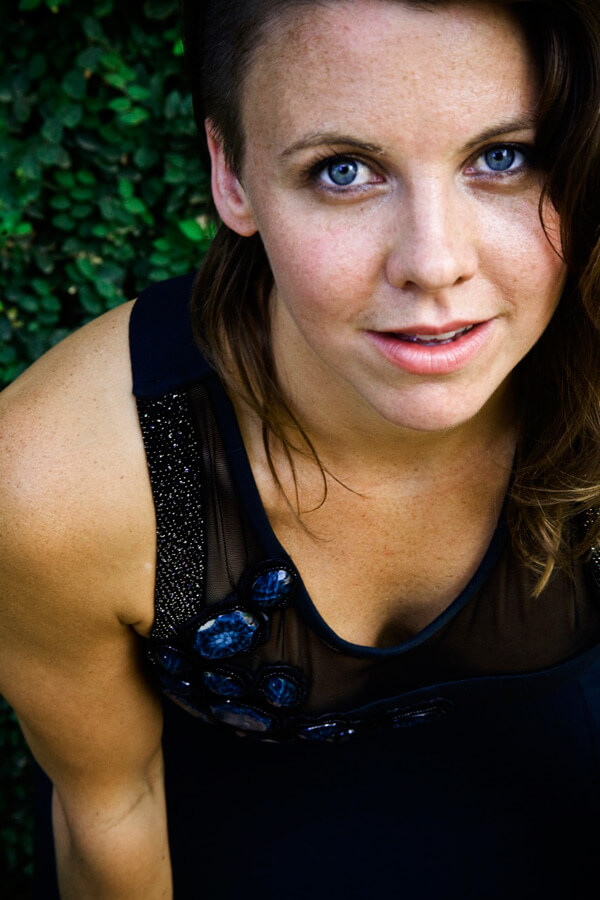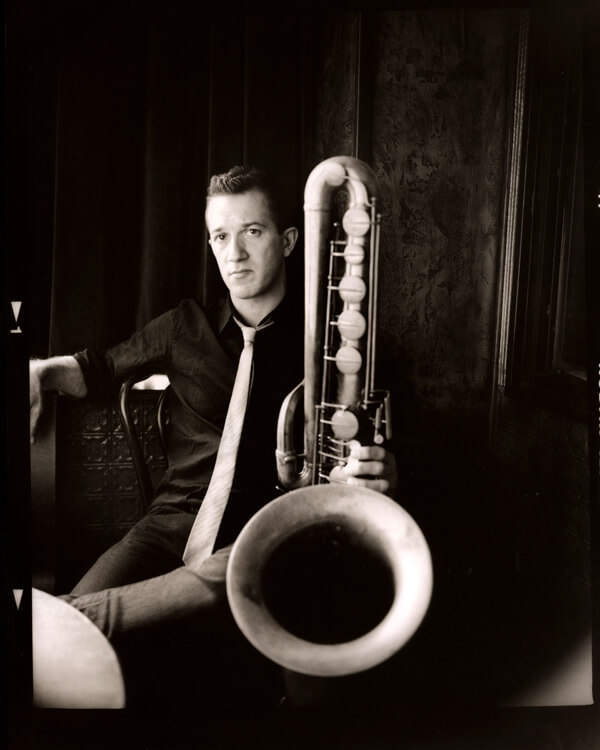
Colin Stetson – Photo by Keith Klenowski
 Many musicians have tried to bring the avant-garde to the masses, and despite their best efforts, something fails to catch with a larger audience. Sometimes there’s a band like Radiohead or Meshuggah, who become popular by speaking in the language of rock music but whose music is just as influenced by Schoenberg or Stockhausen as it is by the Beatles or Metallica. But I’m talking about an artist getting a bunch of twenty-something rock fans who’ve never listened to Albert Ayler or John Cage to come see some truly strange music. It’s tough for those of us that love it all, tonal/atonal, beautiful/ugly, orderly/chaotic… we see the greatness in strange, difficult music, and wish others could as well, yet we get odd looks when trying to get friends to appreciate Webern or late Coltrane. We think, why can’t something harsh and challenging, yet thoughtful, appeal to a wider audience? Why not expand the scope of popular music? But there has always been this wall. And more frustratingly, there is a double-standard of sorts: experimentally-minded rock musicians can travel into the avant-garde (Sonic Youth, Mike Patton, etc.) but musicians from the other side never seem to break out, even into the rock underground. Well, for the most part. There is, of course, Colin Stetson.
Many musicians have tried to bring the avant-garde to the masses, and despite their best efforts, something fails to catch with a larger audience. Sometimes there’s a band like Radiohead or Meshuggah, who become popular by speaking in the language of rock music but whose music is just as influenced by Schoenberg or Stockhausen as it is by the Beatles or Metallica. But I’m talking about an artist getting a bunch of twenty-something rock fans who’ve never listened to Albert Ayler or John Cage to come see some truly strange music. It’s tough for those of us that love it all, tonal/atonal, beautiful/ugly, orderly/chaotic… we see the greatness in strange, difficult music, and wish others could as well, yet we get odd looks when trying to get friends to appreciate Webern or late Coltrane. We think, why can’t something harsh and challenging, yet thoughtful, appeal to a wider audience? Why not expand the scope of popular music? But there has always been this wall. And more frustratingly, there is a double-standard of sorts: experimentally-minded rock musicians can travel into the avant-garde (Sonic Youth, Mike Patton, etc.) but musicians from the other side never seem to break out, even into the rock underground. Well, for the most part. There is, of course, Colin Stetson.
First, some facts: Stetson, an American-born, Montreal-based saxophonist, is known in rock circles through his association with indie darlings Arcade Fire. When playing on his own, he mostly plays bass saxophone, and a little alto, unaccompanied, with no pedals or other effects. However, he takes an unusual approach to the art of miking: his horn is lined with several contact mics in various positions, as well as his throat. And his music mostly consists of repeating patterns, multiphonics (the use of overtones to produce multiple notes), and his simultaneous vocalizations. The multiple mics are intended to blend the various sounds of his horn (high harmonics, low rumbles and clacking keys) so as to make them all equally clear to the listener. It’s an effect especially suited to rock clubs, and as it all came crashing through the PA system at Glasslands Gallery in Williamsburg, I understood why his seemingly (when verbally described) dense and inaccessible music has begun converting mustachioed indie rockers. Usually, when I see something like this, it’s at Le Poisson Rouge or The Stone, and it’s the small but passionately dedicated audience of students, nerds, free-jazz weirdos and proudly atonal old-timers. Here, everyone looks under 40, with many tattooed hands clutching craft beers under half-dead lights. Opening the show was Arcade Fire’s Sarah Neufeld playing unaccompanied, amplified solo violin. Neufeld’s solo music takes an interesting approach, boiling down disparate musics (baroque, minimalism, rock and Appalachian folk) to their core melodic elements and recombining them with high volume and rhythmic drive. Her set was short, and there are unfortunately no recordings to be had, something she shall hopefully remedy soon.

Sarah Neufeld
Within a few notes of Stetson’s set, it became obvious to me why he’s succeeding where others have not. You see, Stetson has found a musical world we all knew existed, unconsciously, but we had only glimpses of in the past. As he pumps out low-frequency waves and shrill shrieks in a 21-st century update of Coltrane’s “sheets of sound”, you feel the space around you change. Like hearing Tibetan chants in a glass palace, the vibrations rattle your core and make your brain into a dervish, whirling and drowning in Stetson’s oceanic noise. But it becomes clear within moments that, noisy as it is, it’s anything but noise. It’s melodic, it’s structured, it’s…catchy? Downright hummable? Head-noddable? As the volume pushes into the red, his throat wails and harmonic screams sound astonishingly like garage-rock howls captured on dying magnetic tape, floating above a cascading orchestra of basses and contrabassoons.
Basically, Stetson is doing what musical experimenters and extremists have always done: he takes materials from contemporary music and builds something radical with them. Extreme or avant-garde music is never born in a vacuum, it always exists as a reaction to, or extension of, something in the musical Zeitgeist. Albert Ayler essentially played updated dixieland, Schoenberg just took counterpoint and harmony to their logical conclusions, and Penderecki did him one better and broke open the concepts of pitch and notation. Stetson takes the extreme, unfamiliar sounds of his multi-mic, multiphonic bass sax-and-vocalization arsenal and then forges them into pieces that effortlessly recall melancholic rock songs. His pulsations and relentlessly rhythmic key-clacking sound like an angry storm of confusion while also sounding suspiciously like a traditional rhythm section. His throat-screams and labored breathing sound like rasping clouds of metallic fuzz while also sounding like raw, punkish vocal hooks.

Colin Stetson – Photo by Scott Irvine
Exhausted and dripping sweat by the end, Stetson bid a fond farewell from the stage…and immediately took up near the merch table, greeting fans and chatting with them while humbly selling his wares. This, of course, is what’s missing from much (but certainly not all) of the “traditional” avant-garde scene: the connection between audience and artist that has defined underground rock music since the punk era. Stetson attracts listeners through his associations and through the sheer novelty of his technique and style, he connects to them through his sublime music, then immediately comes down to earth to laugh, talk shop and sell some merch. His music, too, exists in both worlds. He weaves through the elevated intellectual stratosphere, while staying deep-rooted in warm emotional ground. One can only hope his joyous disregard for boundaries, and the willingness to listen to risky music he inspires in such a wide audience, points the way forward for a new era of pop experimentalism.




















